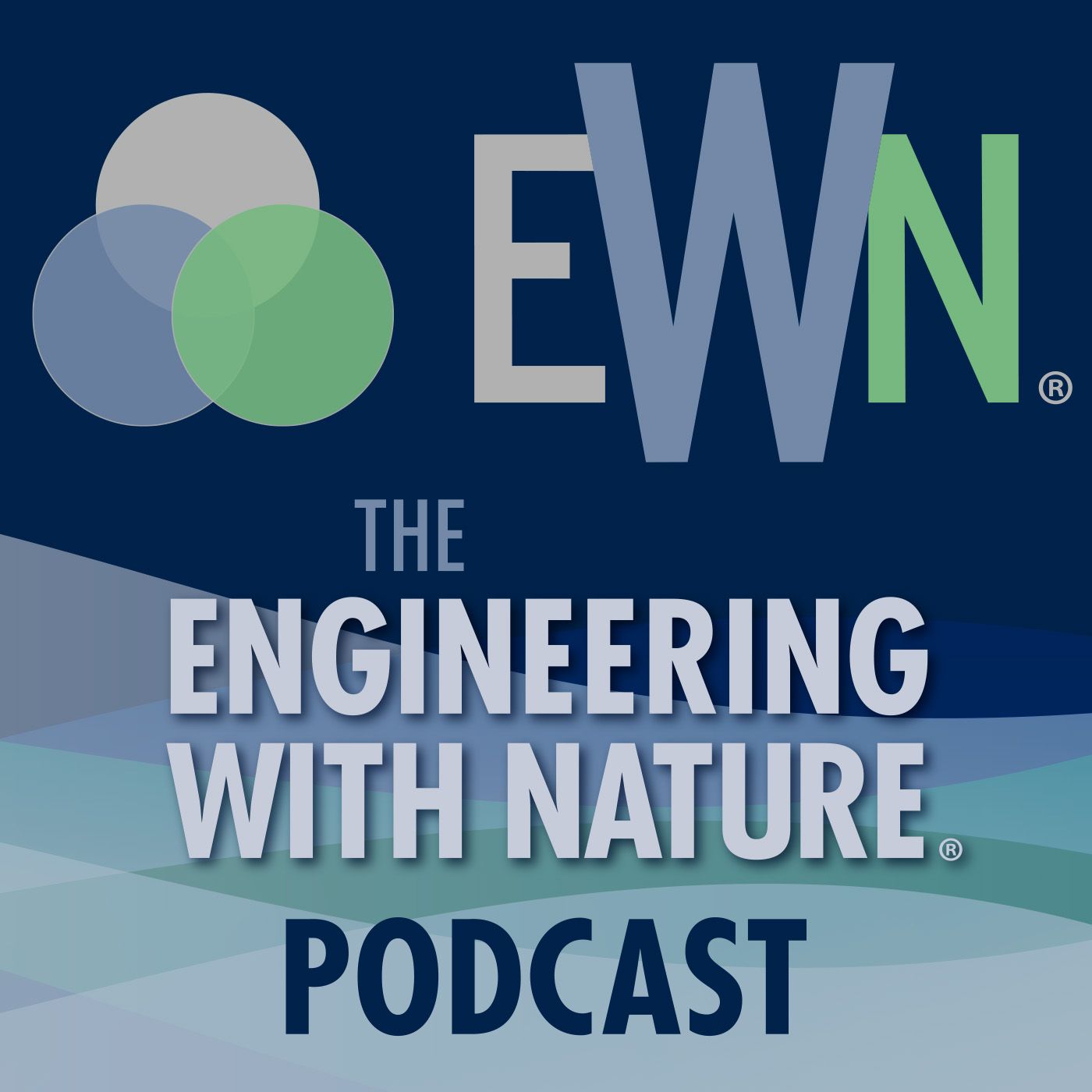3D Printing Nature-Inspired Infrastructure (NII) – The Future is Upon Us!
Description
Imagine the possibilities if brilliant scientists and engineers could figure out how to use natural materials like silt and clay, dredged from waterways, to make nature-inspired, 3D printed structures like reefs and roots to restore habitat and protect coastal shorelines. In Season 7, Episode 6, host Sarah Thorne is joined by Al Kennedy, Burton Suedel, and Andrew McQueen from the US Army Corps of Engineers (USACE), Engineer Research and Development Center (ERDC). All three are Research Biologists in the Environmental Laboratory at ERDC. They’re discussing the 3D printing workshop they hosted in February 2024 to explore the potential of nature-inspired 3D printing. As a special feature of this episode, several of the workshop participants share highlights from the workshop discussions and the inspiration for their future work.
The Corps dredges more than 200 million cubic yards of sediment from navigable waterways every year. In Season 5, Episode 6, Lieutenant General Spellman, USACE Commander and Chief of Engineers, spoke about his 70/30 goal–achieving 70% beneficial use of dredged material by 2030. 3D printing can enable new and novel ways to use sediment as a resource and improve the Civil Works’ mission delivery, unlocking some of the constraints on traditional infrastructure engineering by using simple bioinspired design, leveraging natural geometries to produce more pleasing recreational uses, improved ecological functionality, plus economic and social benefits.
The workshop was a key step in advancing the potential of 3D printing by bringing together a diverse group of experts from government, academia, and the private sector to explore the potential of 3D printing using natural materials. Workshop breakout groups focused on four major research areas:
Ecosystem restoration and bioinspired designCoastal resilience and sustainabilitySediment propertiesScaling up Key discussions and takeaways from the workshop, include:
The importance of being more intentional with infrastructure design, incorporating nature-inspired features to leverage optimizations from nature, and delivering multi-functional materials that offer co-benefits like habitat enhancement alongside primary infrastructure objectives.Discussions on the properties of natural materials and their performance in 3D printers, including stability of end products, and the potential need for pre- and post-processing to meet requirements.Exploring and innovating the best applications for 3D printed materials, such as using dredged material from confined disposal facilities (CDFs) for ports and coastal areas, enhancing community resilience with new or rehabilitated infrastructure like berms.The necessity for maturation and scaling up of 3D printing applications, transitioning from lab-scale to larger format printers suitable for field use, encompassing nozzle design and managing available dredge material for use.The potential safety benefits of using 3D printing to automate infrastructure production in hazardous work environments. Synergy, engagement, and collaboration was evident throughout the workshop, and participants expressed a strong interest in continuing the dialogue. A report on the workshop results will be available on the EWN website.
For more information and resource links, please visit the EWN Podcast page on the EWN website at https://www.engineeringwithnature.org/
Burton Suedel at LinkedInAlan Kennedy at LinkedIna href="https://www.linkedin.com/in/mcqueenandrew"...
More Episodes
When we think about the use of nature-based features to increase coastal resilience, the focus is mostly on coasts along the ocean. But what about the Great Lakes? Over the past 10 years, the Great Lakes have experienced both historic high and low lake levels. These extreme fluctuations cause...
Published 11/26/24
Published 11/26/24
In Season 8, Episode 3, host Sarah Thorne and Amanda Tritinger, Deputy National Lead of the Engineering With Nature (EWN) Program, US Army Corps of Engineers (USACE), are joined by Brian Davis, Associate Professor of Landscape Architecture at the University of Virginia (UVA), and Cathy Johnson,...
Published 10/22/24


